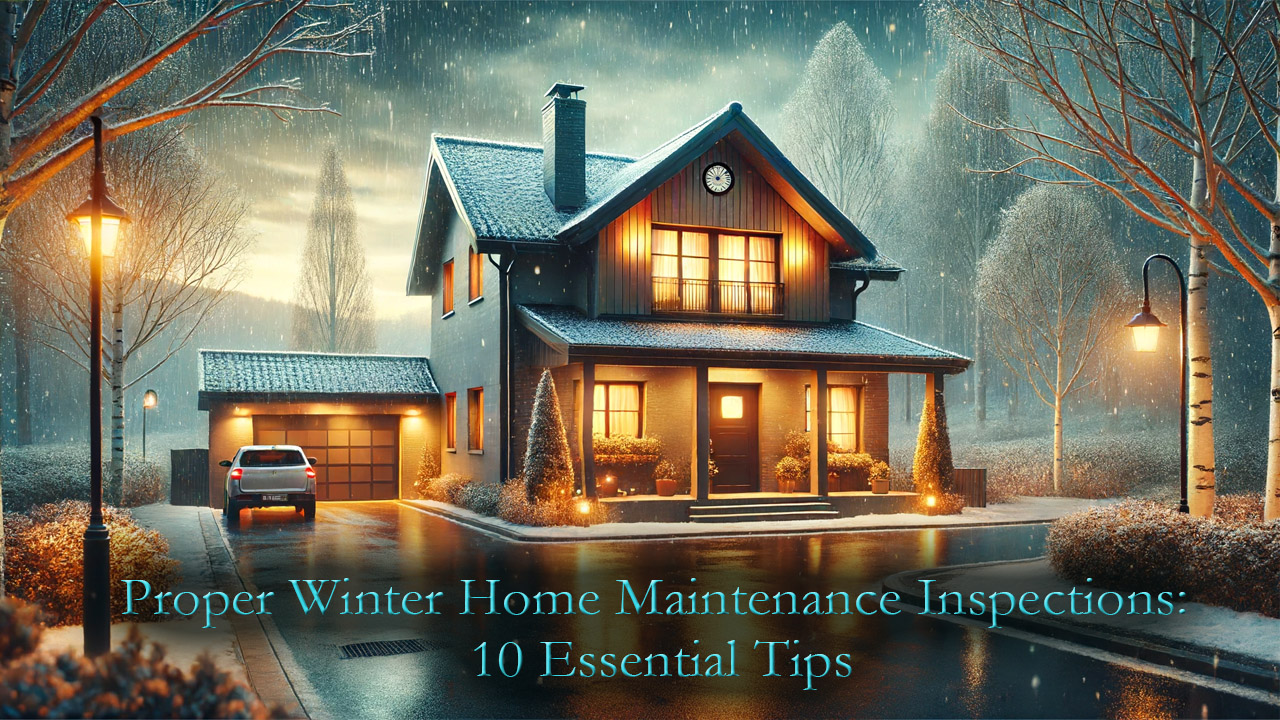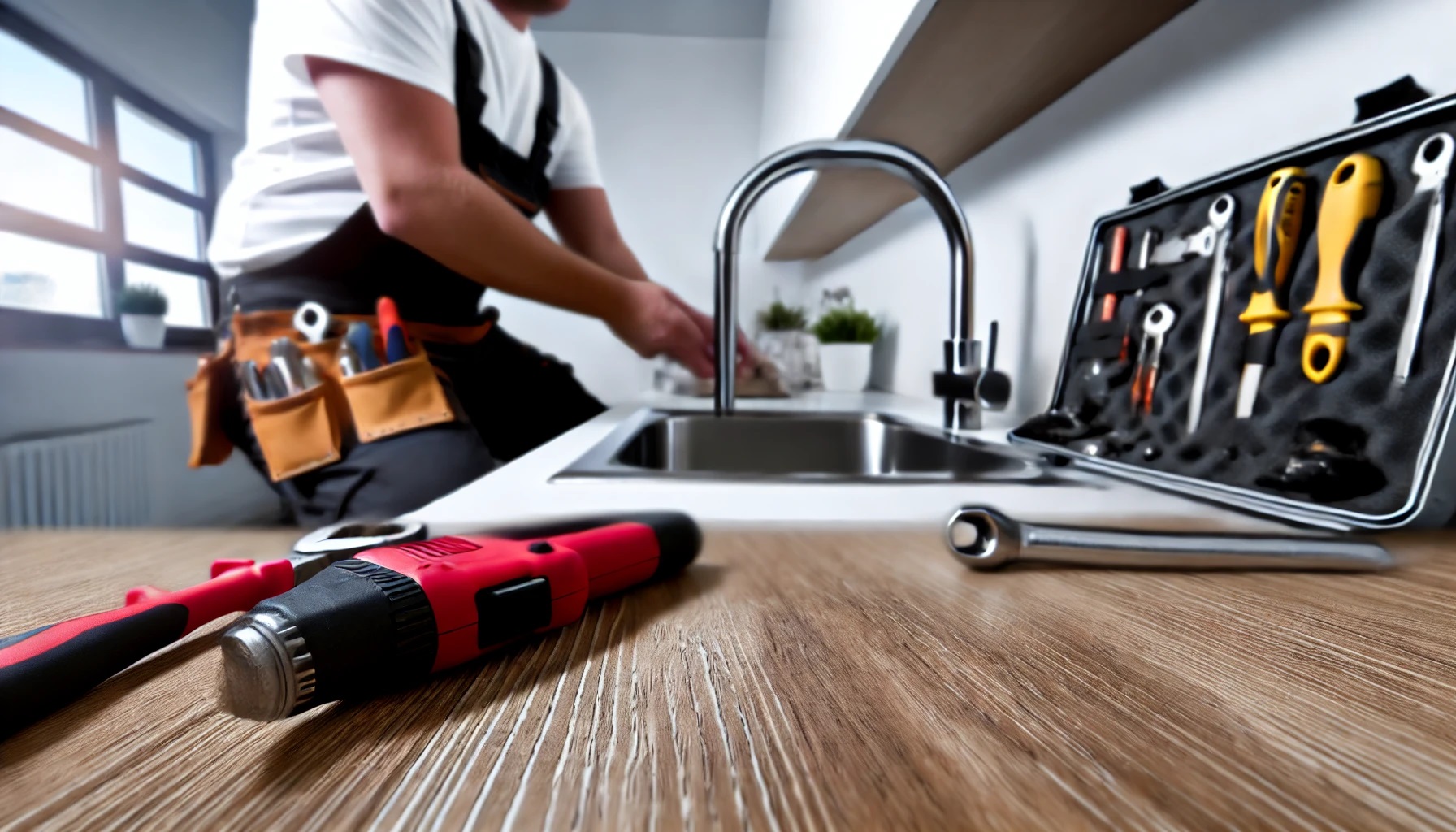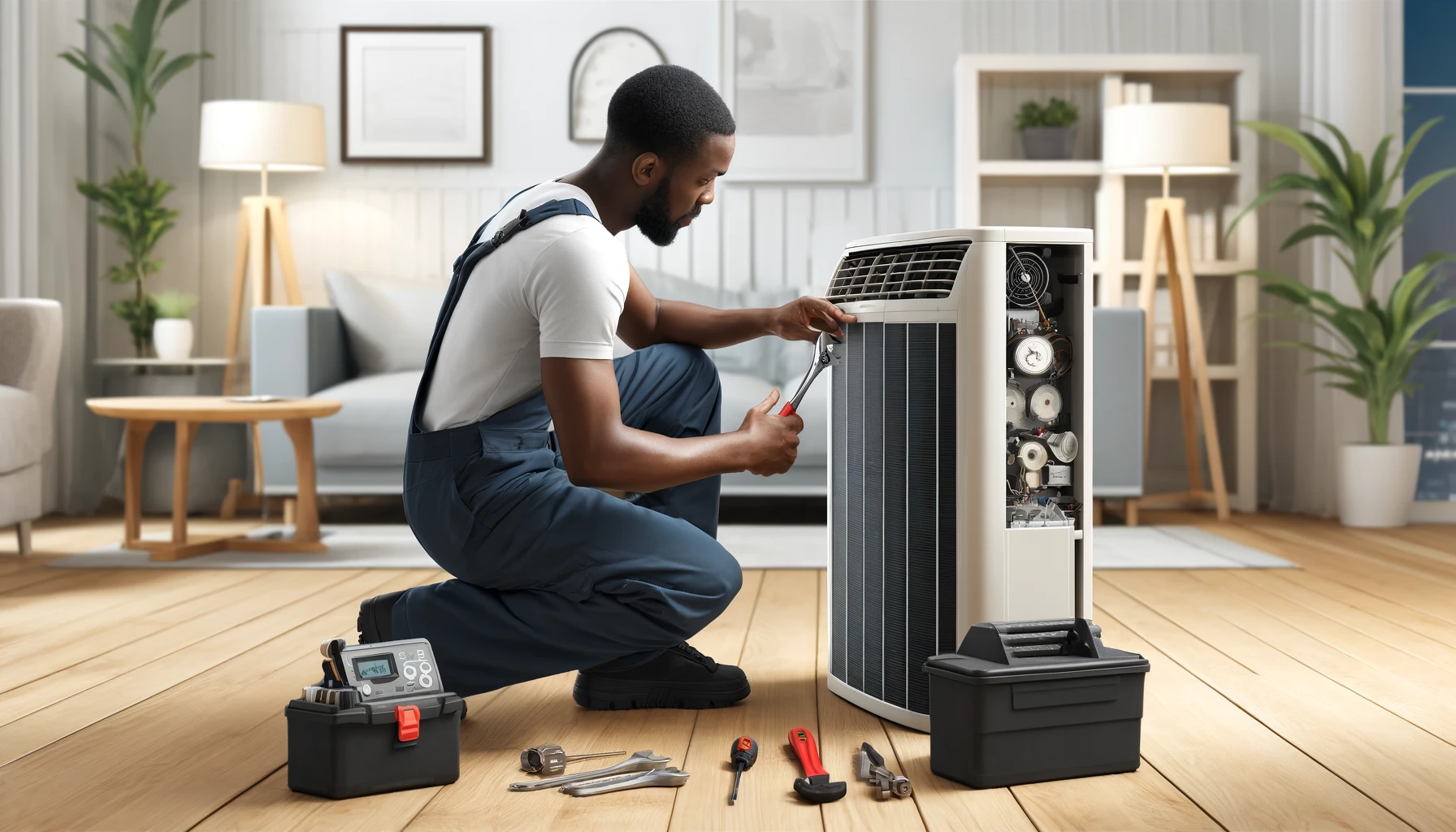As the winter solstice approaches on Thursday, June 20, 2024, at 10:50 PM in Cape Town, homeowners must prepare their properties for the colder months ahead. Proper winter home maintenance inspections are essential to ensure your home remains safe, warm, and energy-efficient throughout the season. Winter can bring a range of challenges, from increased moisture and cold temperatures to potential storm damage.
By conducting thorough maintenance inspections, you can identify and address issues before they become costly problems. This article will guide you through the key aspects of proper winter home maintenance inspections, helping you safeguard your home and enhance its comfort and efficiency during the coldest time of the year.
10 Tips for Winter Home Maintenance Inspections
As winter approaches in Cape Town, ensuring your home is prepared for the colder months becomes a top priority. Conducting thorough winter home maintenance inspections can help you identify potential issues early and take preventive measures to avoid costly repairs. Here are 10 essential tips to guide you through the process, ensuring your home remains safe, warm, and efficient throughout the winter season.
1. Inspect and Clean Gutters and Downspouts
As part of your winter home maintenance inspections, it is crucial to inspect and clean your gutters and downspouts. Gutters play a vital role in directing rainwater away from your home’s foundation, preventing water damage and erosion. Begin by removing leaves, twigs, and any debris that may have accumulated in the gutters. This helps ensure proper water flow and reduces the risk of blockages that can lead to overflow and damage.
Next, check the downspouts to make sure they are free of obstructions and are directing water at least three feet away from the foundation. Consider installing downspout extenders if necessary. Regular maintenance of gutters and downspouts not only protects your home from potential water damage but also ensures that the entire drainage system functions effectively throughout the winter months.
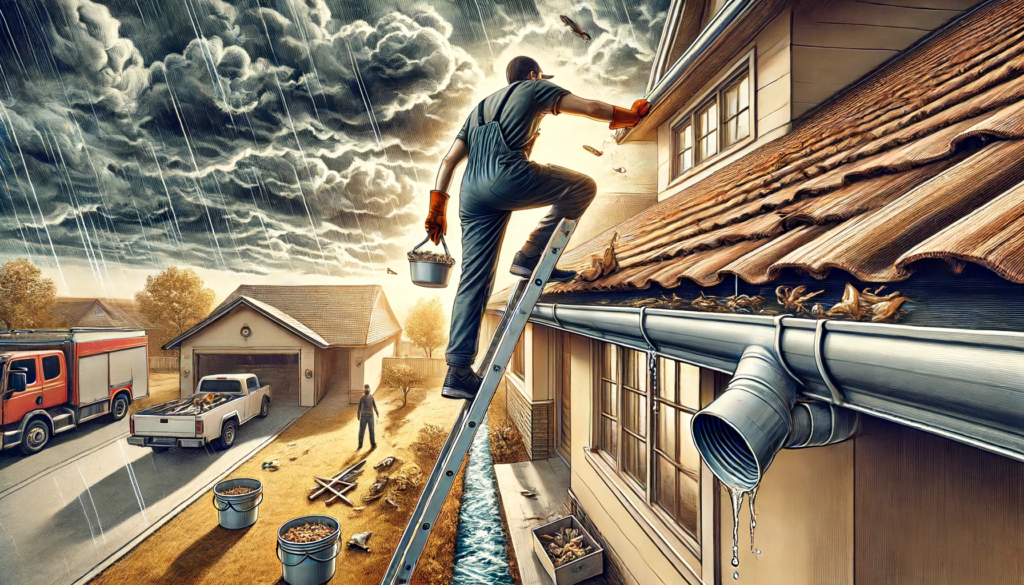
2. Check Roof and Shingles
A critical component of winter home maintenance inspections is to check the roof and shingles. The roof is your home’s first line of defence against harsh winter weather, so it’s essential to ensure it’s in good condition. Start by inspecting the roof for any damaged, loose, or missing shingles. These issues can lead to leaks and water damage when winter storms hit.
Look for signs of wear and tear, such as curling, cracking, or blistering shingles, which can indicate that the roof is nearing the end of its lifespan. Additionally, check for any signs of moss, algae, or lichen growth, as these can trap moisture and cause further damage to the shingles and roof structure.
If you notice any issues, it’s important to address them promptly. Small repairs can often be handled as a DIY project, but for more extensive damage or if you’re unsure of what to do, hiring a professional roofer is advisable. Ensuring your roof and shingles are in top condition will help prevent leaks and maintain the integrity of your home throughout the winter season.
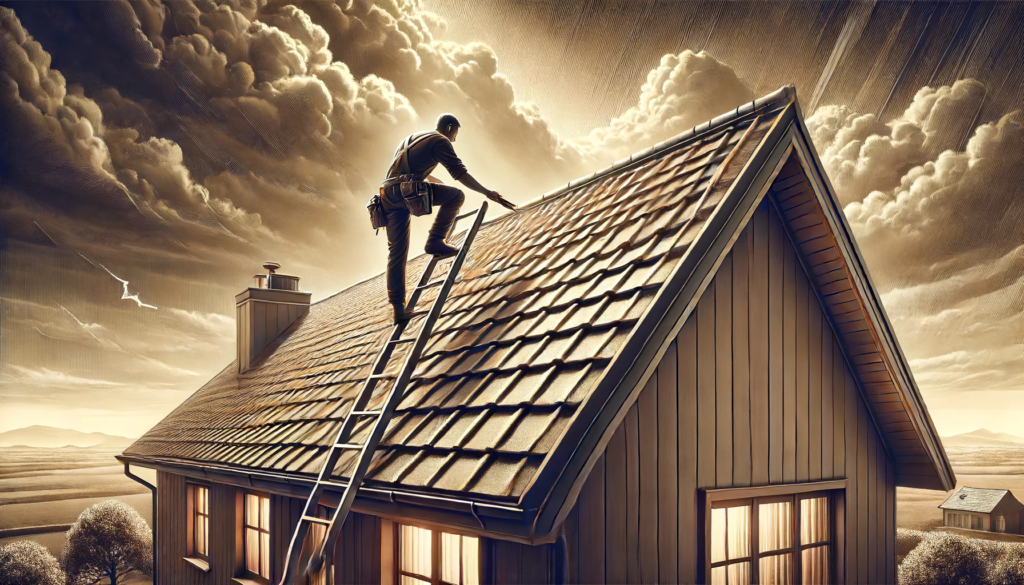
3. Seal Windows and Doors
Sealing windows and doors is a vital step in your winter home maintenance inspections. Drafty windows and doors can significantly reduce your home’s energy efficiency, leading to higher heating costs and decreased comfort. Start by inspecting all windows and doors for gaps and cracks where cold air might enter.
Use weatherstripping to seal any gaps around the edges of doors and windows. This simple and cost-effective measure can greatly improve the insulation of your home. For any cracks in window frames or doorframes, apply caulk to seal them effectively. Additionally, consider adding door sweeps to the bottom of exterior doors to prevent drafts.
By addressing these common sources of heat loss during your winter home maintenance inspections, you can enhance your home’s energy efficiency, maintain a more consistent indoor temperature, and reduce your heating bills. Ensuring windows and doors are properly sealed will make your home warmer and more comfortable throughout the cold season.
You can check out some of these foam sealing strips from Builder’s Warehouse.
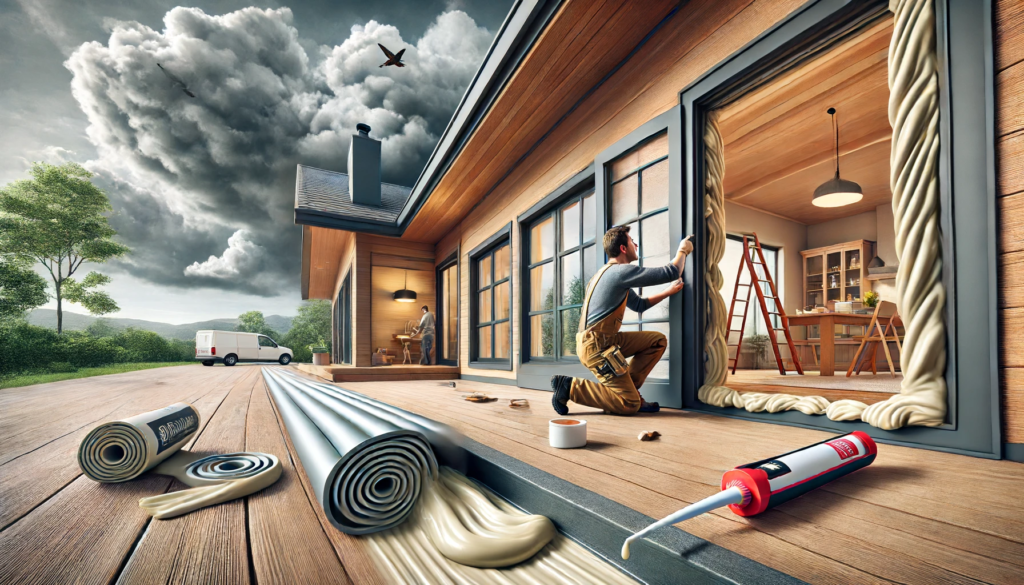
4. Inspect and Service the Heating System
As part of your winter home maintenance inspections, it is crucial to inspect and service your heating system to ensure it operates efficiently and reliably throughout the colder months. Start by scheduling a professional inspection of your furnace or heat pump. A certified technician can check for any potential issues, clean the components, and ensure the system is functioning correctly.
During your home maintenance inspections for winter, replace or clean the filters in your heating system. Dirty or clogged filters can significantly reduce the efficiency of your system, increase energy consumption, and affect indoor air quality. Regularly changing the filters helps maintain optimal performance and prolongs the lifespan of your heating equipment.
Additionally, check the thermostat settings to make sure your heating system is programmed correctly for winter. If you have a programmable thermostat, adjust the settings to ensure your home is warm when needed and energy is conserved when you are away or asleep.
By thoroughly inspecting and servicing your heating system during your home maintenance inspections for winter, you can ensure a warm and comfortable living environment while minimizing energy costs and avoiding unexpected breakdowns.
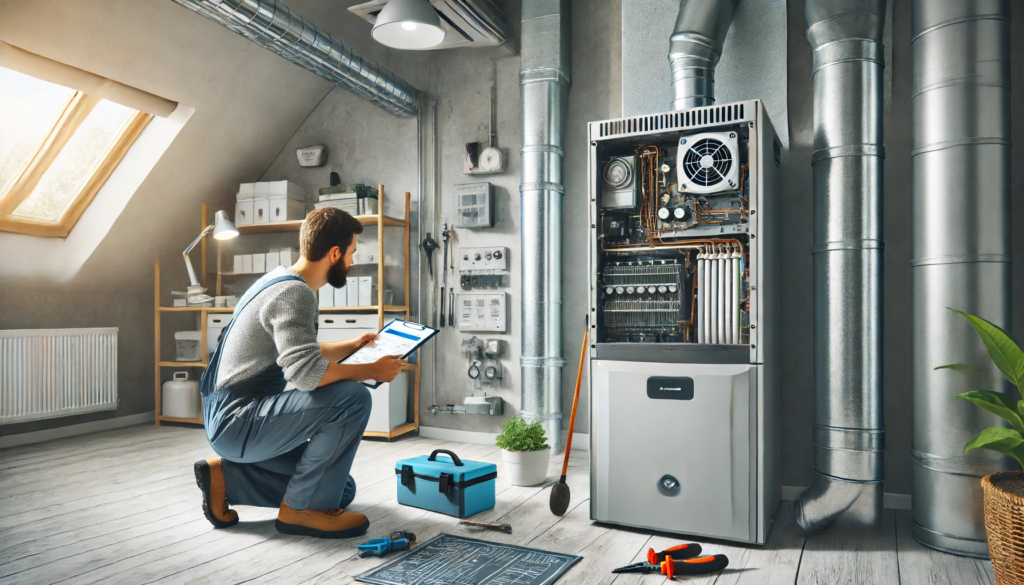
5. Insulate Pipes
Insulating your pipes is a crucial step in winter home maintenance inspections to prevent them from freezing and bursting during extremely cold temperatures. Start by identifying any exposed pipes, particularly those located in unheated areas such as basements, attics, garages, and crawl spaces. These areas are most vulnerable to freezing and can cause significant damage if not properly insulated.
Use foam pipe insulation sleeves or fibreglass insulation to wrap the exposed pipes. This simple and cost-effective measure will help maintain the temperature of the water inside the pipes, reducing the risk of freezing. During your winter home maintenance inspections, ensure that the insulation is securely fitted and covers all exposed sections of the pipes. Pay extra attention to corners and joints where pipes are more likely to be exposed to cold air.
Additionally, consider using heat tape or heat cables for added protection, especially in areas with severe winter conditions. These products can be wrapped around the pipes and plugged into an electrical outlet to provide continuous warmth, further reducing the risk of freezing.
By insulating your pipes during your winter home maintenance inspections, you can protect your plumbing system from the harsh effects of cold weather, ensuring a reliable water supply and avoiding costly repairs. This proactive step will help maintain the integrity of your home’s plumbing throughout the winter months.
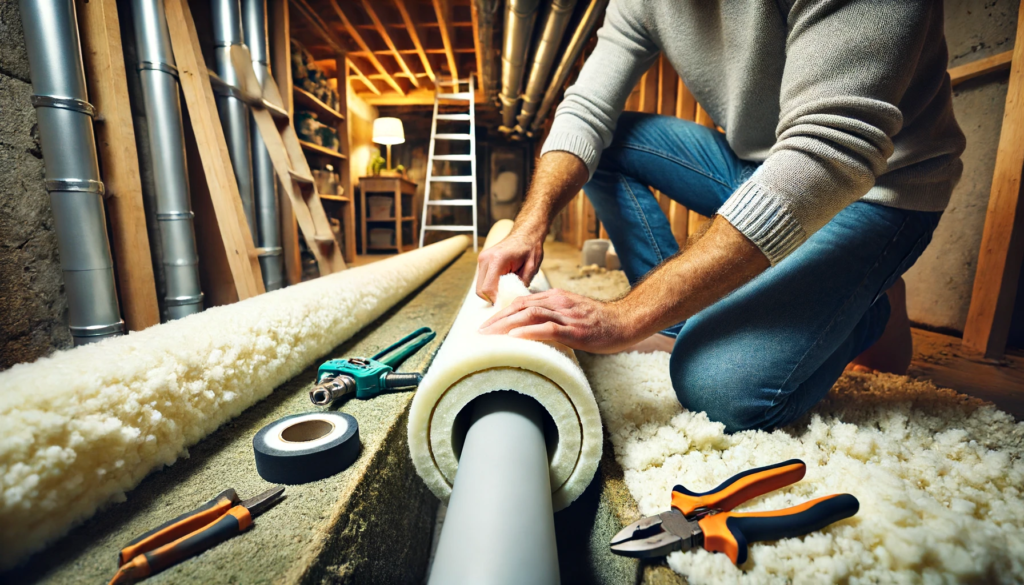
6. Check the Fireplace and Chimney
Ensuring your fireplace and chimney are in good condition is a key component of winter home maintenance inspections. A well-maintained fireplace not only provides warmth and comfort but also ensures the safety of your home. Start by inspecting the fireplace for any visible cracks, damaged bricks, or mortar issues. These problems can allow heat to escape and pose a fire hazard.
During your winter home maintenance inspections, it is essential to have your chimney professionally cleaned and inspected. Over time, creosote, a highly flammable substance, can build up inside the chimney, increasing the risk of chimney fires. A professional chimney sweep will remove this buildup and check for any blockages or structural issues that could impede proper ventilation.
Additionally, inspect the chimney cap and flue. The chimney cap prevents debris, animals, and rain from entering the chimney, while the flue ensures proper ventilation of smoke and gases. Make sure the cap is intact, and the flue opens and closes correctly.
Finally, check the fireplace damper to ensure it opens and closes properly. A functional damper is crucial for controlling the flow of air and smoke when the fireplace is in use and preventing cold air from entering your home when it is not.
By thoroughly inspecting and maintaining your fireplace and chimney during your winter home maintenance inspections, you can enjoy a warm, cosy, and safe environment throughout the colder months. This proactive approach helps prevent potential hazards and ensures your fireplace operates efficiently.
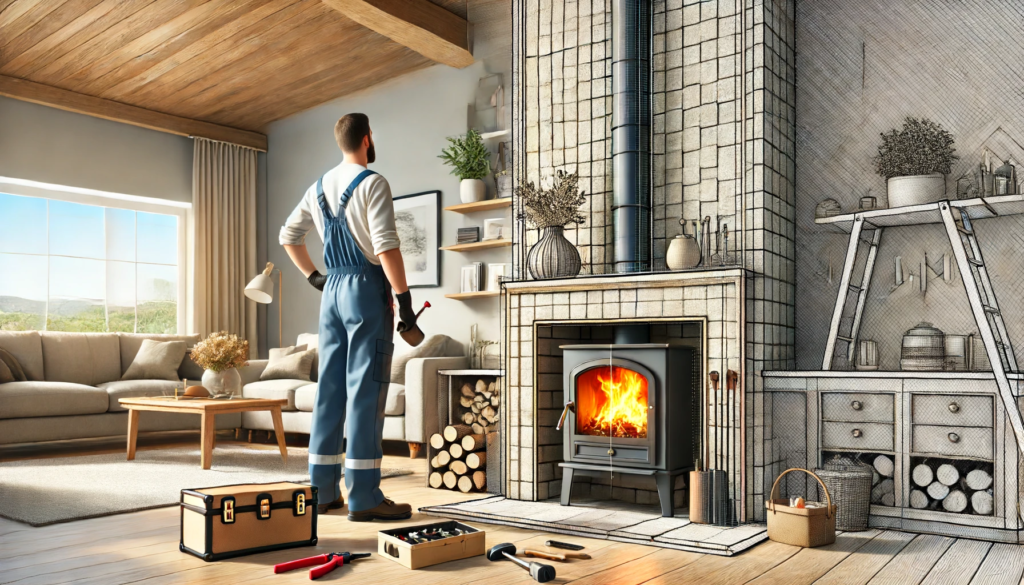
7. Examine the Attic and Crawl Spaces
Thoroughly examining the attic and crawl spaces is an essential part of winter home maintenance inspections. These areas often contribute significantly to heat loss and can be prone to moisture and pest issues if not properly maintained. Start by checking the attic for adequate insulation. Proper insulation in the attic is crucial for maintaining a stable indoor temperature and preventing heat from escaping through the roof.
During your winter home maintenance inspections, look for any signs of damage or wear in the insulation. If you notice thin or missing sections, consider adding more insulation to meet the recommended levels for your area. Inspect for any signs of moisture, such as water stains, mold, or mildew, which can indicate a leak or poor ventilation. Addressing these issues promptly can prevent more significant problems down the line.
Similarly, examine the crawl spaces for proper insulation and ventilation. Crawl spaces can be particularly susceptible to moisture accumulation and pest infestations. Ensure that the insulation in these areas is intact and covers all exposed surfaces adequately. Check for any signs of water infiltration or pests and take necessary measures to seal entry points and improve drainage.
Proper ventilation is also vital in both the attic and crawl spaces. Adequate airflow helps control moisture levels and prevents the buildup of mould and mildew. Ensure that vents are not blocked and are functioning correctly.
By carefully examining the attic and crawl spaces as part of your winter home maintenance inspections, you can improve your home’s energy efficiency, prevent heat loss, and address potential moisture and pest issues. This proactive approach helps maintain a comfortable and safe living environment throughout the winter months.
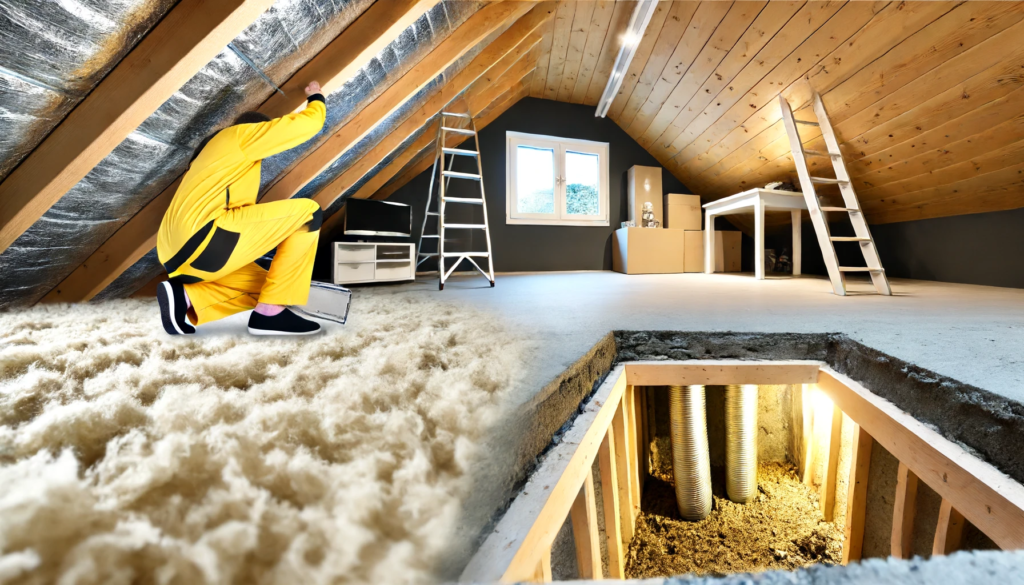
8. Test Smoke and Carbon Monoxide Detectors
Testing smoke and carbon monoxide detectors is a crucial aspect of winter home maintenance inspections to ensure the safety of your home and its occupants. These devices are essential for providing early warnings in case of fire or carbon monoxide leaks, which are particularly dangerous during the winter months when homes are often sealed tightly and heating systems are in full use.
As part of your winter home maintenance inspections, start by checking the functionality of all smoke detectors and carbon monoxide detectors in your home. Press the test button on each device to ensure it emits a loud, clear alarm. If the alarm is weak or non-existent, replace the batteries immediately. It is a good practice to replace the batteries in all detectors at least once a year, regardless of their current power status.
Additionally, ensure that there are enough detectors installed throughout your home. Smoke detectors should be placed in every bedroom, outside each sleeping area, and on every level of the home, including the basement. Carbon monoxide detectors should be installed near sleeping areas and on each level of the home, particularly near fuel-burning appliances.
During your winter home maintenance inspections, also check the expiration date on each detector. Smoke detectors typically need to be replaced every 10 years, while carbon monoxide detectors usually have a lifespan of 5-7 years. Replace any units that are outdated to ensure optimal performance.
Finally, ensure that everyone in your household knows what to do if an alarm sounds. Establish and practice an emergency evacuation plan, and make sure all family members are familiar with the location of detectors and the sound of the alarms.
By thoroughly testing and maintaining your smoke and carbon monoxide detectors during your winter home maintenance inspections, you can provide a critical layer of protection for your home and loved ones. This proactive approach helps ensure that your safety devices are in optimal working condition, offering peace of mind throughout the winter season.
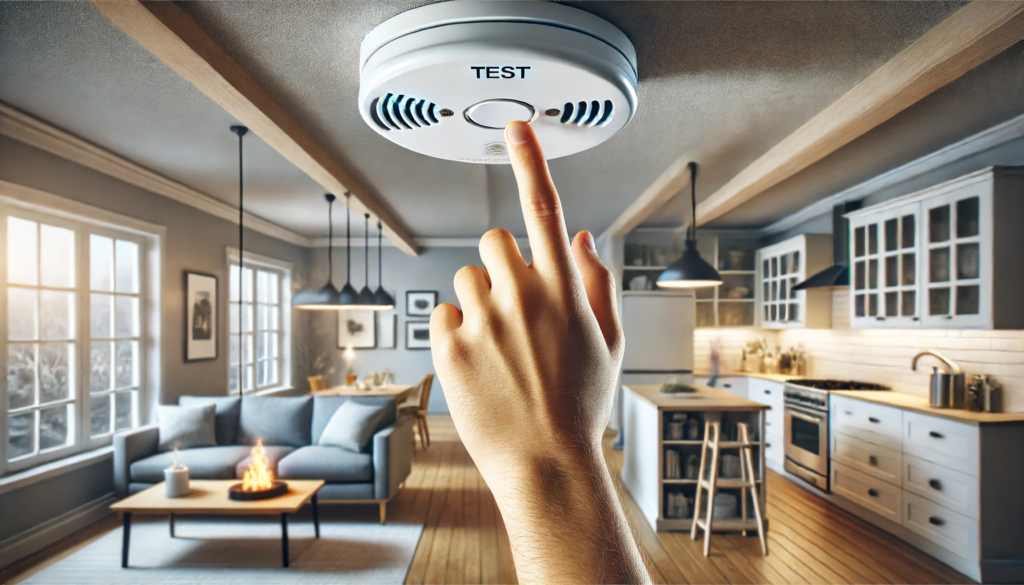
9. Inspect Exterior Walls and Foundation
Inspecting the exterior walls and foundation of your home is a key part of winter home maintenance inspections. This step helps prevent cold air infiltration and water damage, ensuring your home remains warm and structurally sound throughout the winter months.
Start by walking around the exterior of your home, closely examining the walls for any cracks, gaps, or signs of damage. Small cracks can often be sealed with a high-quality exterior caulk to prevent cold air and moisture from entering. For larger cracks or significant damage, it may be necessary to consult a professional to assess and repair the structural integrity of the walls.
During your winter home maintenance inspections, pay special attention to areas around windows and doors. These spots are particularly prone to gaps and leaks. Ensure that the caulking around window and door frames is intact and replace any damaged or missing sections. Additionally, inspect the seals and weatherstripping around doors and windows, replacing them as needed to enhance insulation and prevent drafts.
Next, examine the foundation of your home. Look for any signs of cracks, gaps, or water pooling around the base of the foundation. Cracks in the foundation can allow cold air and water to seep in, leading to potential structural damage and increased heating costs. Seal any small cracks with a suitable foundation sealant, and consider consulting a professional for larger or more concerning issues.
Ensure that the soil around the foundation slopes away from your home to facilitate proper drainage and prevent water from accumulating around the foundation. Poor drainage can lead to water infiltration and freeze-thaw cycles that exacerbate cracks and structural damage.
By thoroughly inspecting the exterior walls and foundation as part of your winter home maintenance inspections, you can address potential issues before they become major problems. This proactive approach helps maintain the structural integrity and energy efficiency of your home, ensuring a warm and safe living environment throughout the winter season.
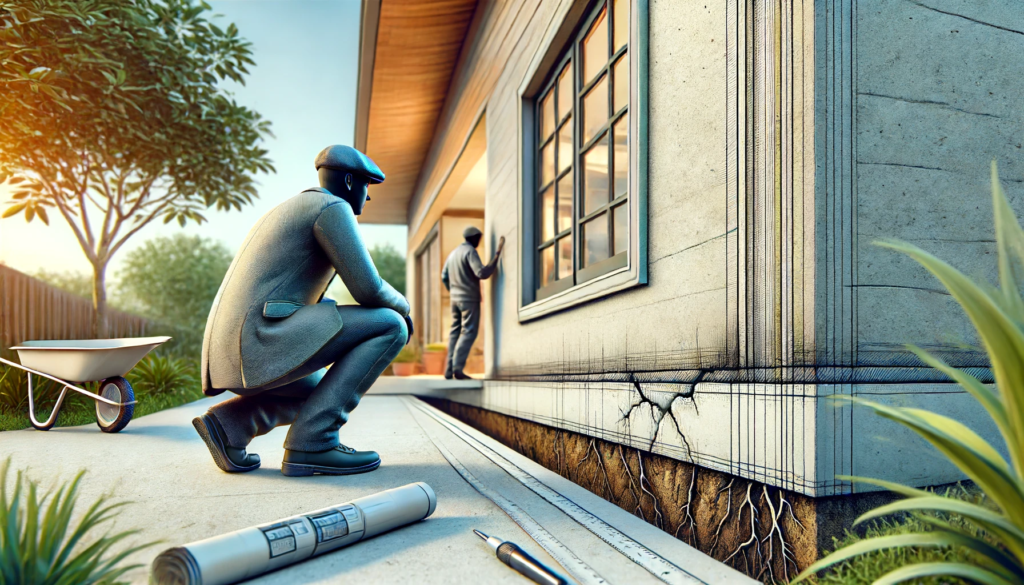
10. Prepare Outdoor Spaces and Equipment
Preparing outdoor spaces and equipment is an essential component of winter home maintenance inspections. Taking the time to secure and protect these areas can prevent damage and ensure everything is ready for use when the warmer months return.
Start by draining and storing garden hoses to prevent them from freezing and cracking. Shut off outdoor water valves and drain any remaining water from the pipes to avoid freezing and potentially bursting pipes. Cover outdoor faucets with insulated covers to protect them from the cold.
During your winter home maintenance inspections, inspect and clean outdoor furniture. Remove any dirt or debris, and store the furniture in a dry, sheltered location such as a garage or shed to protect it from the elements. If storing indoors is not an option, use weather-resistant covers to shield the furniture from snow and ice.
Additionally, check any outdoor equipment, such as grills and lawnmowers. Clean the grill thoroughly and store it in a protected area. For lawnmowers and other gardening tools, ensure they are cleaned, maintained, and stored in a dry place. Add a fuel stabilizer to the gas tank of lawnmowers and other gas-powered equipment to prevent the fuel from degrading over the winter months.
Don’t forget to prepare your outdoor living spaces, such as patios and decks. Sweep away leaves and debris, and inspect for any signs of damage or needed repairs. Apply a weatherproof sealant to wooden decks to protect them from moisture and temperature fluctuations.
Finally, make sure that walkways and driveways are clear of debris and in good repair. Check for any cracks or damage that could become hazardous when covered with ice or snow. Stock up on ice melt or sand to ensure safe passage during icy conditions.
By thoroughly preparing outdoor spaces and equipment during your winter home maintenance inspections, you can prevent damage, extend the life of your outdoor items, and ensure a smoother transition when spring arrives. This proactive approach helps maintain the functionality and appearance of your outdoor areas throughout the winter season.
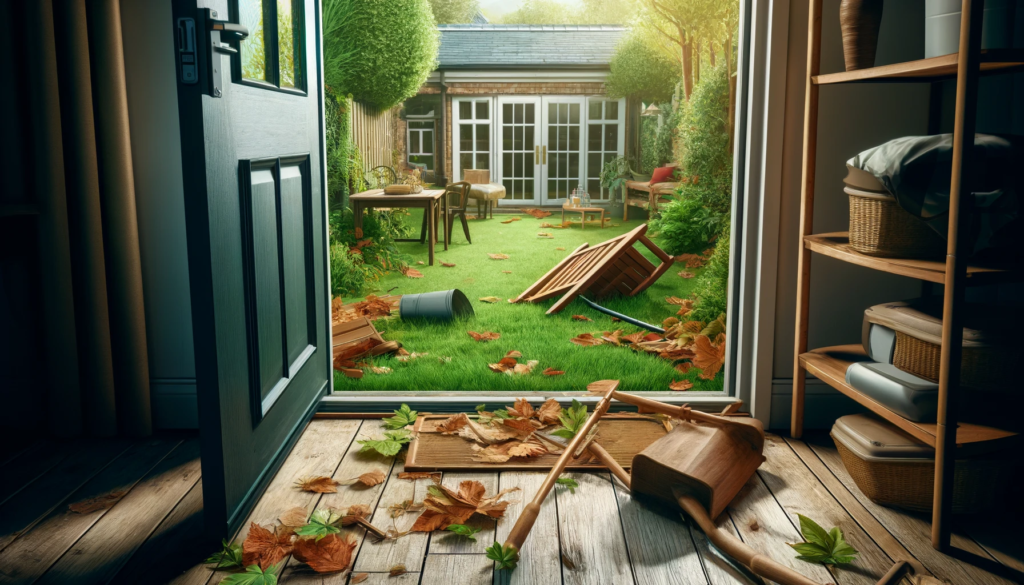
Are You Ready to Do Your Winter Home Maintenance Inspections?
Conducting thorough winter home maintenance inspections is essential for ensuring your home remains safe, warm, and efficient during the colder months. By following these comprehensive tips, you can identify and address potential issues before they become major problems, ultimately saving on costly repairs and enhancing the comfort of your living space.
Regular maintenance not only protects your investment but also contributes to the overall longevity and performance of your home. Stay proactive and prepared, and enjoy a cosy winter season in your well-maintained home.
Contact Sustainable Systems Technologies if you need help with winter home maintenance inspections!

